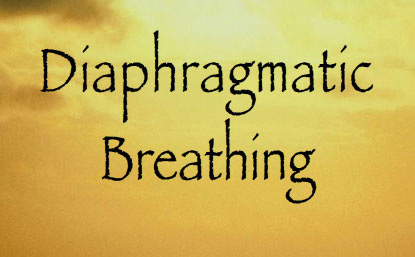|
What the heck is Vata? And why is this important to me? If you are wondering, read on… There is an ancient field of study called Ayurveda. It is the medical arm of yoga. Originating thousands of years ago, Ayurveda translates as the Science of Life and offers a model for understanding ourselves better. Not only is Ayurveda tied into a philosophy of how we came into these bodies; as a science, it can help explain why each of us differs somewhat from another and how we can best care for our unique self. According to this philosophy or life science, one’s inherent makeup is a reflection of the elements found in nature. As the ancient wisdom holders studied the human body they came to believe that the basic elements of nature can be combined in various ways, resulting in three primary constitutions (or doshas). The understanding of these doshas is inherent to the practice of Ayurveda. These qualities play out in an individual's body, mind, and emotions from the time of conception. If we look at energy – the potentially mobile quality of natural elements - it can be categorized from subtle (space, air) to dense (earth). The Chakra System is an ancient model for understanding how the natural elements, as energy or life force, merge and form our body. And it forms the world around us, too. The three doshas are named Vata, Pitta and Kapha (with a silent H). Vata is the most subtle of the three doshas, comprised of the air and space elements. Pitta is comprised of fire and water and is the most intense expression of the elements. Kapha Dosha is formed of earth and a bit of water. What do you get when you mix earth and water? Mud! Kapha Dosha is the most dense, and thus the slowest and naturally the heaviest of the three constitutions. On the other end of the density spectrum is the Vata Dosha. It is the lightest and quickest and the one that changes the most easily. Why is this important? Because of its subtle nature, Vata Dosha is the one that goes most easily out of whack. Over time, an imbalance in the Vata Dosha affects Pitta and Kapha, as well. That’s when dis-ease really sets in, according to the Ayurveda Model. When we understand a bit about the way the elements form who we are, we can make choices that keep us healthy and functioning in an optimal way. While there are a lot of details I could share, for this article what is important is to understand Vata’s Characteristics: cold, dry, quick, mobile, spacey, and anxious. As we move through autumn and into Early Winter, these are also the qualities we find in the environment around us, at least here in Colorado. Temperatures are dropping. Winds are picking up. The ground is very dry. When the conditions around us match a dosha, it becomes agitated or exacerbated within our own bodies, minds and emotions. As a result from an increase in Vata around us (including the dry indoor air, travel at a pace faster than one can walk, etc.) one may feel more unsettled and more anxious. This could even lead to depression, blame or guilt. Does that sound fun? Not to me! So… what to do? We want to counter the qualities we find in nature, especially at this time of year. Here are some suggestions for how to do that:
I wish for you a happy, healthy and productive transition into and through the winter season. Namaste, Sharon The Art of Belly Breathing, or Diaphragmatic Breathing for Relaxation can be fun! Give it a try... Diaphragmatic breathing offers an easy form of relaxation. This breath, a slow, relaxed and controlled deep breath, involves the movement of the belly during both the inhalation and the exhalation. For yogis, it’s a basic form of pranayama – the art of restoring one’s life force through the act of breathing. It’s hard to believe, because the act of breathing seems so natural and happens automatically whether we think about it or not, that many of us have forgotten how to breathe correctly. Let’s explore this. The lungs – which we fill with air when we breathe - are not muscles. They are acted upon by the muscles of respiration. Breathing begins with the diaphragm, a large muscle that spans the width of your torso and separates the thoracic or chest cavity from the abdominal or belly cavity. While it is the biggest muscle of respiration, it is not the only muscle associated with the breathing process. When we breathe into the belly verses only into the chest (called chest breathing), which many people do unconsciously, we more effectively stimulate the muscles of respiration. There are many reasons, however, why we may not do this. And as a result, often times we breathe more shallowly than we should. This leads to an increase in heart rate and blood pressure, among other things. If you’d like to more effectively use the muscles of respiration to breathe more deeply, which leads to a greater sense of relaxation, then I invite you to practice The The Art of Belly Breathing. Practice the following exercise lying down until it becomes natural. Then you can practice in a seated position, and even while standing. Do your best to breathe through the nose throughout the exercise, and stop if you become light headed or dizzy. These symptoms will subside with continued practice. To begin: Take a comfortable position, loosen tight clothing and close your eyes. Imagine breathing only into the belly area as you inhale. While the lungs are filling with air as you take it in through your nose, let the belly expand. This happens when the diaphragm contracts, causing it to drop down into the abdominal cavity. To foster greater awareness of this, you gently rest your hands on your belly. It may be that you’ll need to consciously initiate an active expansion of the abdomen just before you breathe in as you are first working with this practice, inviting your belly to expand into your hands. Do so gently and continue this as you inhale through the nose (in the case of respiratory or sinus problems, it may be that you’ll breathe through your mouth, which is ok). While inhaling, do your best to expand your abdomen while letting your chest remain passive until the very end. Remember, you are training the belly, not the chest (or shoulders), to do the breathing. Near the end of the inhalation, the diaphragm will begin to relax, causing you to naturally exhale. Let the belly drop in at this point. Emphasize this further by gently squeezing the belly toward the spine as you near the end of the exhalation as breathe out through your nose. This gentle squeeze of the belly releases tension in the diaphragm, allowing it to rise up into the thoracic cavity again. Note that, after this, a pause may occur naturally before the body is ready to take breath in again. Practice this for several minutes while lying down. You could even recline against a bolster, over a foam roller or use two blocks – one placed under your upper back and another one under your head, for support and to highlight the actions associated with diaphragmatic breathing. As you grow comfortable with belly breathing, lengthen the amount of time you practice in a reclining position until it becomes a very natural activity. Then proceed to explore belly breathing in a seated position, and ultimately while standing. Notice the relaxation brought about by breathing this way. Commentary: You may find that you typically breathe in a pattern opposite to what’s being suggested. That’s quite common. Being startled or unexpectedly surprised, attacked, yelled at, etc. (especially during our formative years) can cause us to tense and tighten, sucking the breath in as a conditioned response designed to keep us safe. The process of tightening the belly as you inhale in called “Reverse Breathing” and it only serves to perpetuate stress and strain. The reason why is that reverse breathing stimulates the Sympathetic Nervous System – that part responsible for triggering the flight/fright/freeze mechanism in our bodies. Diaphragmatic breathing, on the other hand, stimulates the Parasympathetic Nervous System. This system is responsible for the relaxation response in our bodies. What’s more, when we breathe this way we can take bigger breaths (because that big muscle that lies all the way across the torso near the base of the lungs, the diaphragm, gets out of the way). We also become more sensitive to our “gut instincts” when we cultivate diaphragmatic breathing. We learn to rely not solely on the mind but also on our intuition which is seated in the belly. Curious about this? Please visit my website to read an article on the Vagus Nerve for more information: www.MountainWisdomYoga.com/blog/articlestoeducateandentertain. Disclaimer: It is my hope that this information contributes to a sense of greater well being and better health for all who read it. It is not meant to take the place of medical advice. Please consult your doctor if you experience unusual signs of fatigue or shortness of breath at any time. Yours, in health. ~Sharon Harvey Alexander www.MountainWisdomYoga.com
0 Comments
|
Details
Author -
|
|
Looking for Beta Testers!
What's involved: * Scheduling four, two hour visits over a two month period. * Arriving for, fully experiencing, and offering feedback on those four, two hour visits in the next two months. * Completing an emailed feedback form after each session and at the end of the four sessions. * Providing a testimonial and recommending this program to others. The market rate for this program $1007. As a selected Best Tester, you would: - Pay upfront only $607. - Schedule the four appointments and complete them within three months. |




 RSS Feed
RSS Feed